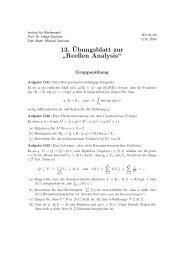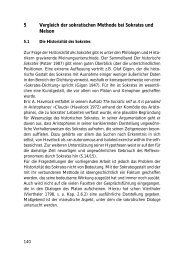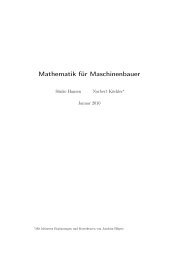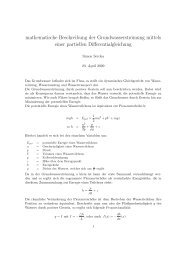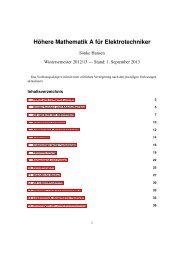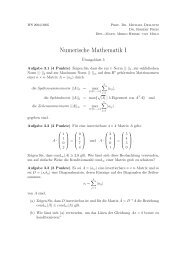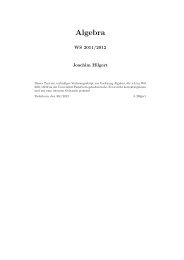Covering Pareto Sets by Multilevel Subdivision Techniques
Covering Pareto Sets by Multilevel Subdivision Techniques
Covering Pareto Sets by Multilevel Subdivision Techniques
Create successful ePaper yourself
Turn your PDF publications into a flip-book with our unique Google optimized e-Paper software.
In this article we develop set oriented numerical methods for the approximationof the set of global <strong>Pareto</strong> points. Let us illustrate the notion of (global and local)<strong>Pareto</strong> points <strong>by</strong> the following example.Example 2.3 In Fig. 1 we present an example of two objective functions f j : Ê →Ê, j =1, 2. In this case the set of local <strong>Pareto</strong> points consists of the union of theintervals [0, 1] and [1.5, 2]. However, only the points in the interval [1.5, 2] are alsoglobally <strong>Pareto</strong> optimal.6543210−1 −0.5 0 0.5 1 1.5 2 2.5 3xFigure 1: Two objective functions f j : Ê → Ê (j =1, 2) on the interval [−1, 3].A Necessary Condition for OptimalityIn our numerical methods we are going to make use of the following theorem ofKuhn and Tucker ([14]) which states a necessary condition for <strong>Pareto</strong> optimality.Theorem 2.4 Let x ∗ be a <strong>Pareto</strong> point of (MOP).Then there exist nonnegativescalars α 1 ,...,α k ≥ 0 such thatk∑α i =1i=1andk∑α i ∇f i (x ∗ )=0. (2.2)i=1Obviously (2.2) is not a sufficient condition for (local) <strong>Pareto</strong> optimality. Onthe other hand points satisfying (2.2) are certainly “<strong>Pareto</strong> candidates” and thus,following [15], we now emphasize their relevance <strong>by</strong> the followingDefinition 2.5 Apointx ∈ Ê n is called a substationary point if there exist scalarsα 1 ,...,α k ≥ 0 such that (2.2) is satisfied.4




